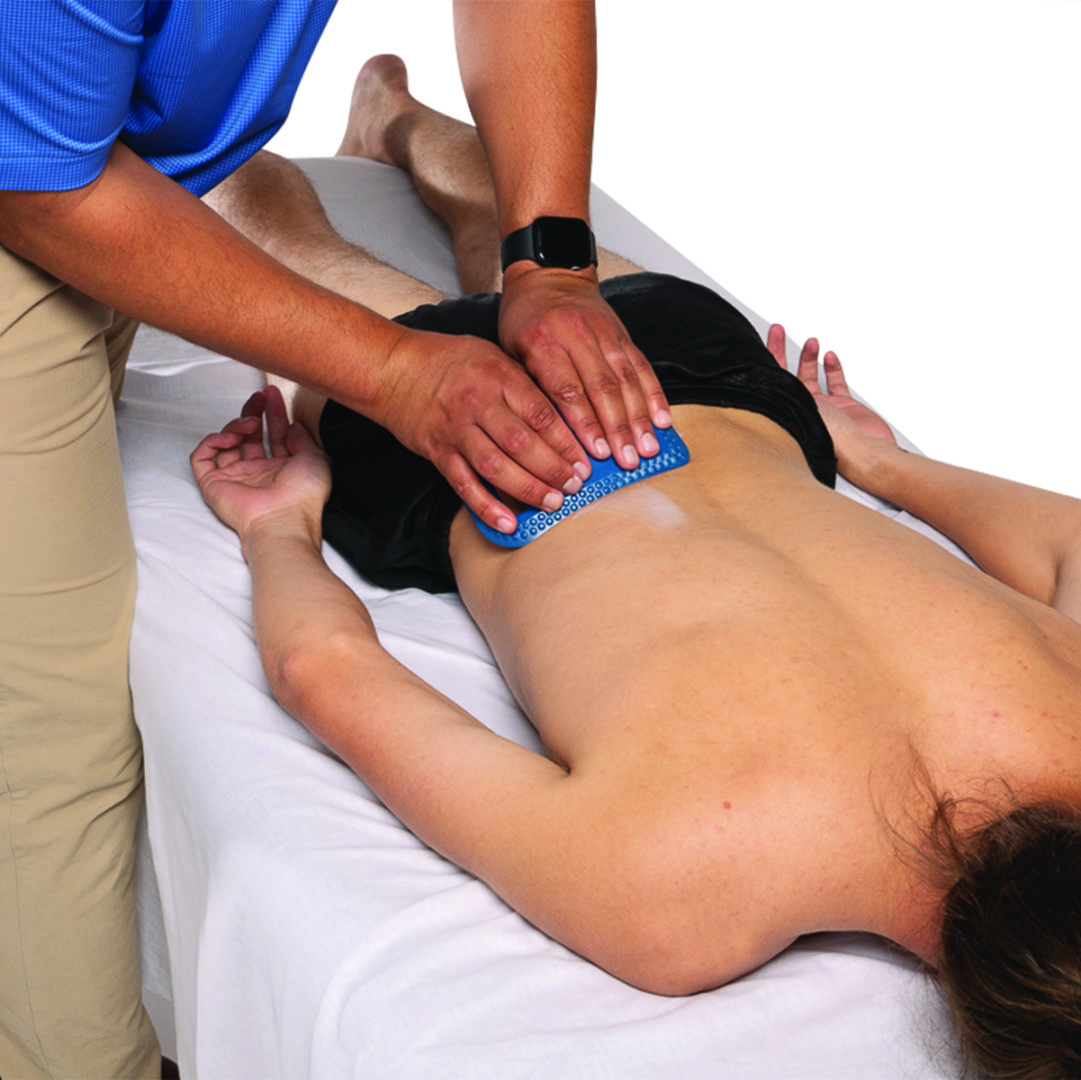
by Russell Fiore, ATC (former head Athletic Trainer, Brown University)
Instrument assisted soft tissue mobilization (IASTM) is a myofascial intervention used for the treatment of soft tissue dysfunction in muscle, ligament, tendon, and fascia. This dysfunction causes the soft tissue to become less mobile and fibrotic. After lotion is applied on the skin, the IASTM tool’s rigid edge is used with a stroking technique to mobilize the soft tissue through the skin. The benefits include increasing flexibility and range of motion, relaxing soft tissue tension, improving circulation, and freeing up adhesions and scar tissue. IASTM rigid instruments come in a variety of shapes to allow them conform to different body areas.
A key advantage to IASTM when compared to foam rollers and other hand held massage tools is that most foam rollers, hand held rollers and massage guns apply pressure with a “top-down” approach. In other words, they are putting pressure on the surface of the muscle to break up tightness and promote flexibility. While this can be effective, most IASTM tools have a more aggressive edge that allows them to get under the fascia and create separation between the fascia and muscle. This is highly beneficial as scar tissue and adhesions will often times adhere the muscle to the fascia, limiting the muscle’s range of motion. Having a tool with an edge to get under the fascia and break up these adhesions can be very effective in returning flexibility to the area as it allows the muscle to move freely without the restriction of attached fascia.
FlexEdge™ is a new and innovative IASTM instrument that provides the same benefits as the aforementioned rigid instruments, yet FlexEdge™ is flexible, not rigid. The result is one instrument that can be contoured to mobilize many areas of the body. The ergonomic shape and rubberized nature of the material allows for an excellent grip on the instrument preventing slippage. FlexEdge™ can also be used to evaluate soft tissue lesions more accurately enhancing vibratory perception. Stroking techniques can be performed with either of its two double beveled treatment edges or four radius corners. The material’s pliability allows its treatment edges to give slightly when applied over superficial boney areas. You are able to mobilize soft tissue around these difficult areas with much less patient discomfort.
